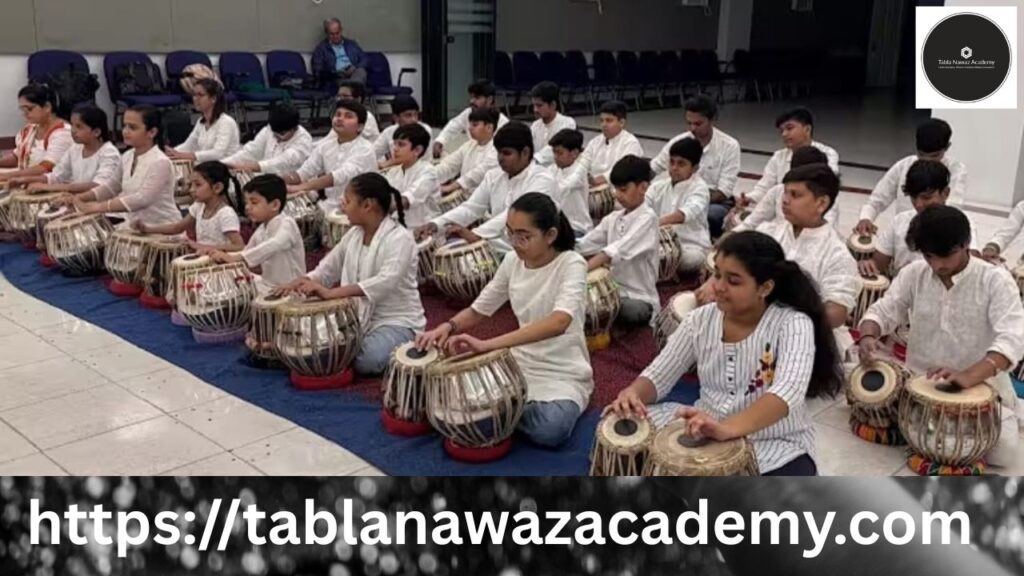Tabla bol Dhamar Taal, Dhamar Taal is a prominent rhythmic cycle in Hindustani classical music, often linked with the Dhrupad style of singing. This taal is characterized by its unique structure and historical significance. Structure:
- Beats (Matras): Dhamar Taal consists of 14 beats.
- Divisions (Vibhag): The beats are grouped into a 5-2-3-4 pattern, which is asymmetrical and creates a distinctive rhythmic flow.
- Claps (Tali) and Waves (Khali):
- Claps (Tali): Beats 1, 6, and 11 are marked by claps.
- Wave (Khali): Beat 8 is marked by a wave of the hand, indicating a change in the rhythmic cycle.
Theka (Syllabic Pattern):
The theka, or basic pattern, of Dhamar Taal, is:
Copy code
1 2 3 4 5 6 7 8 9 10 11 12 13 14 क ध्धि ट धि ट धा ऽ ग त्ति ट ति ट ता ऽ KA DDHI TA DHI TA DHAA - GA TI TA TI TA TAA -
In counting out the beat, the pattern is as follows:
Copy code
Clap 2 3 4 5 | Clap 2 | Wave 2 3 | Clap 2 3 4 |
Characteristics:
- Association: Dhamar Taal is deeply associated with the Dhrupad style, one of the oldest and most serious forms of Hindustani classical music.
- Instrumentation: Traditionally played on the pakhawaj, it is also performed on the tabla in modern settings.
- Musical Form: A song set to Dhamar Taal is often referred to as a Dhamar, characterized by its thematic focus on the playful and romantic antics of Krishna, especially during the Holi festival.
- Mood: Dhamar compositions are known for their gentle, romantic, and light-hearted nature, often depicting scenes of Krishna teasing the milkmaids (gopis).
Significance:
Dhamar Taal holds an essential place in Hindustani classical music, offering a rhythmic framework that supports complex compositions and improvisations. Its unique 14-beat cycle and asymmetric division create a distinctive tempo that challenges and enriches musical expression.
In summary, Dhamar Taal is a 14-beat rhythmic cycle integral to Hindustani classical music, particularly the Dhrupad style, marked by its asymmetric beat pattern and romantic, playful thematic content related to Krishna’s escapades.
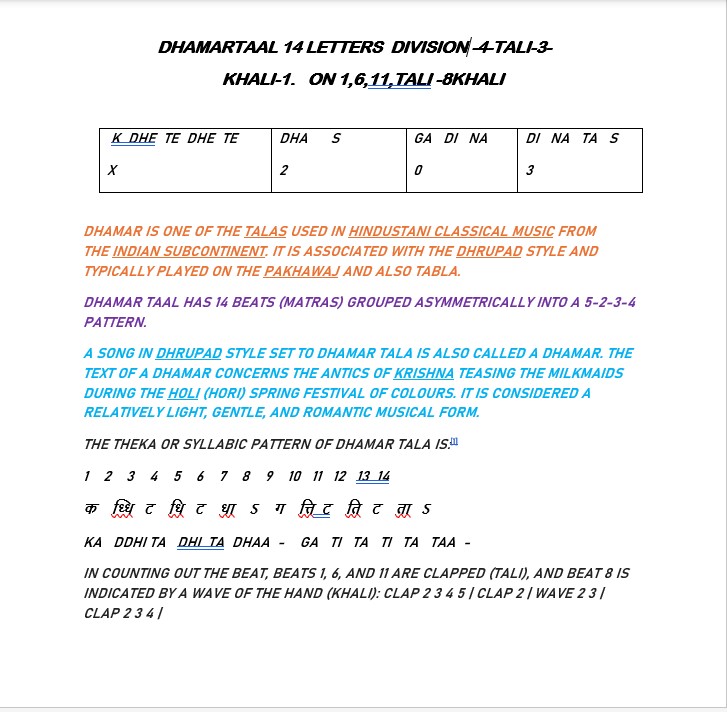
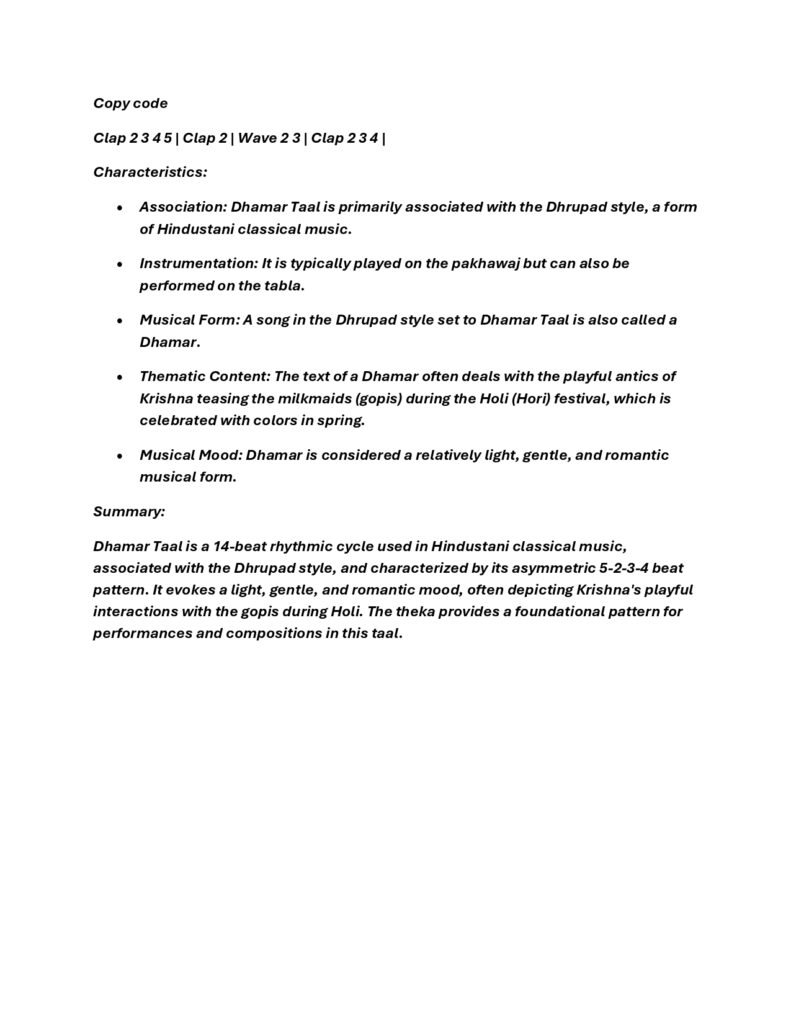
4o
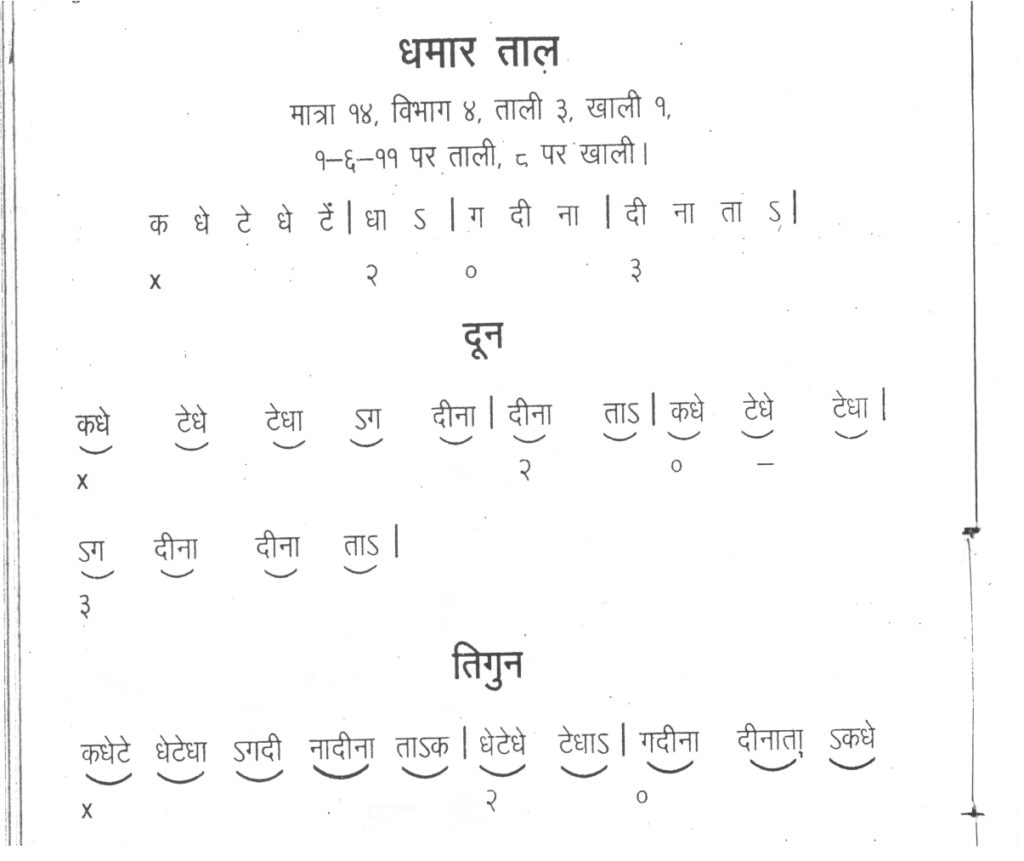
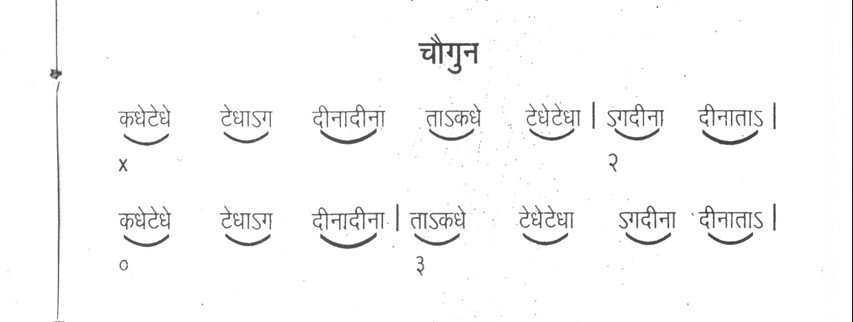
https://www.youtube.com/@BhagawanSingh
https://www.facebook.com/sbsinghtablaguru

